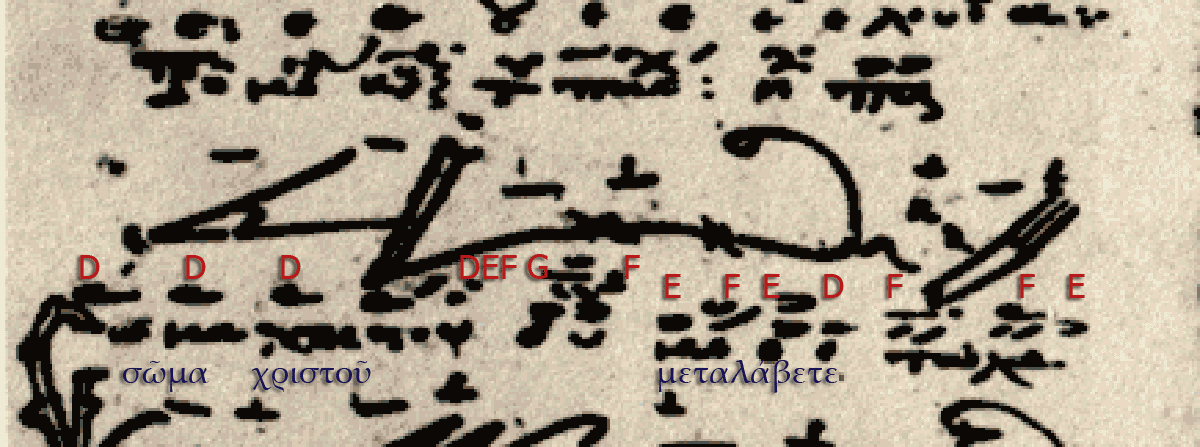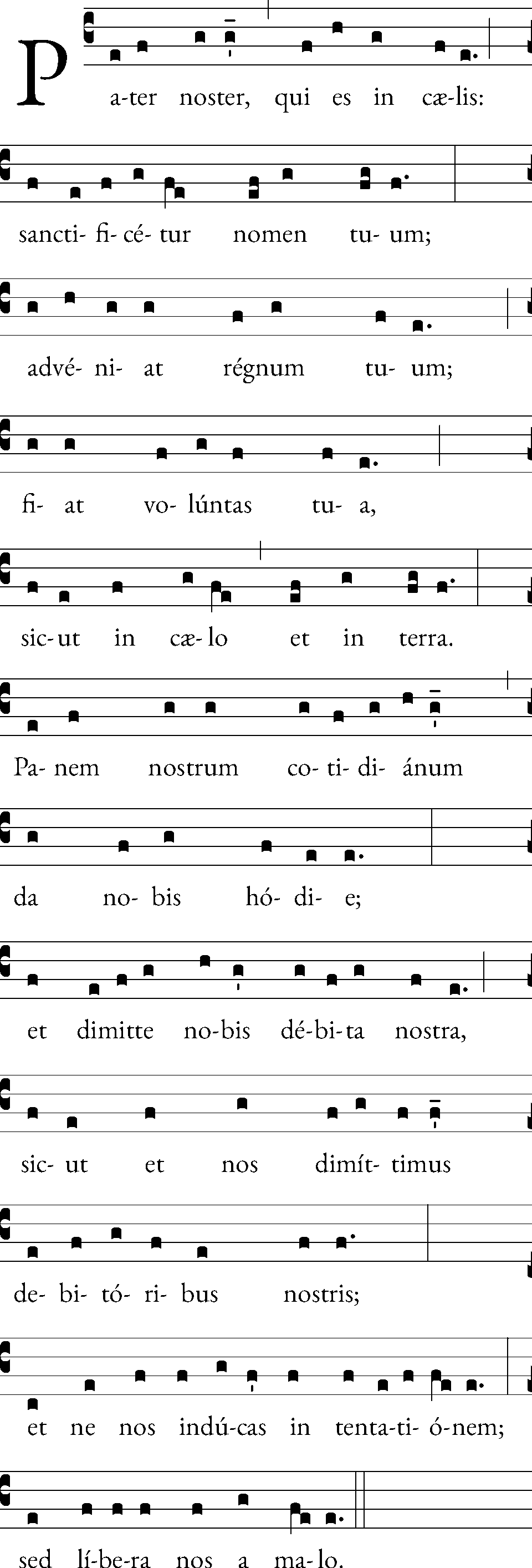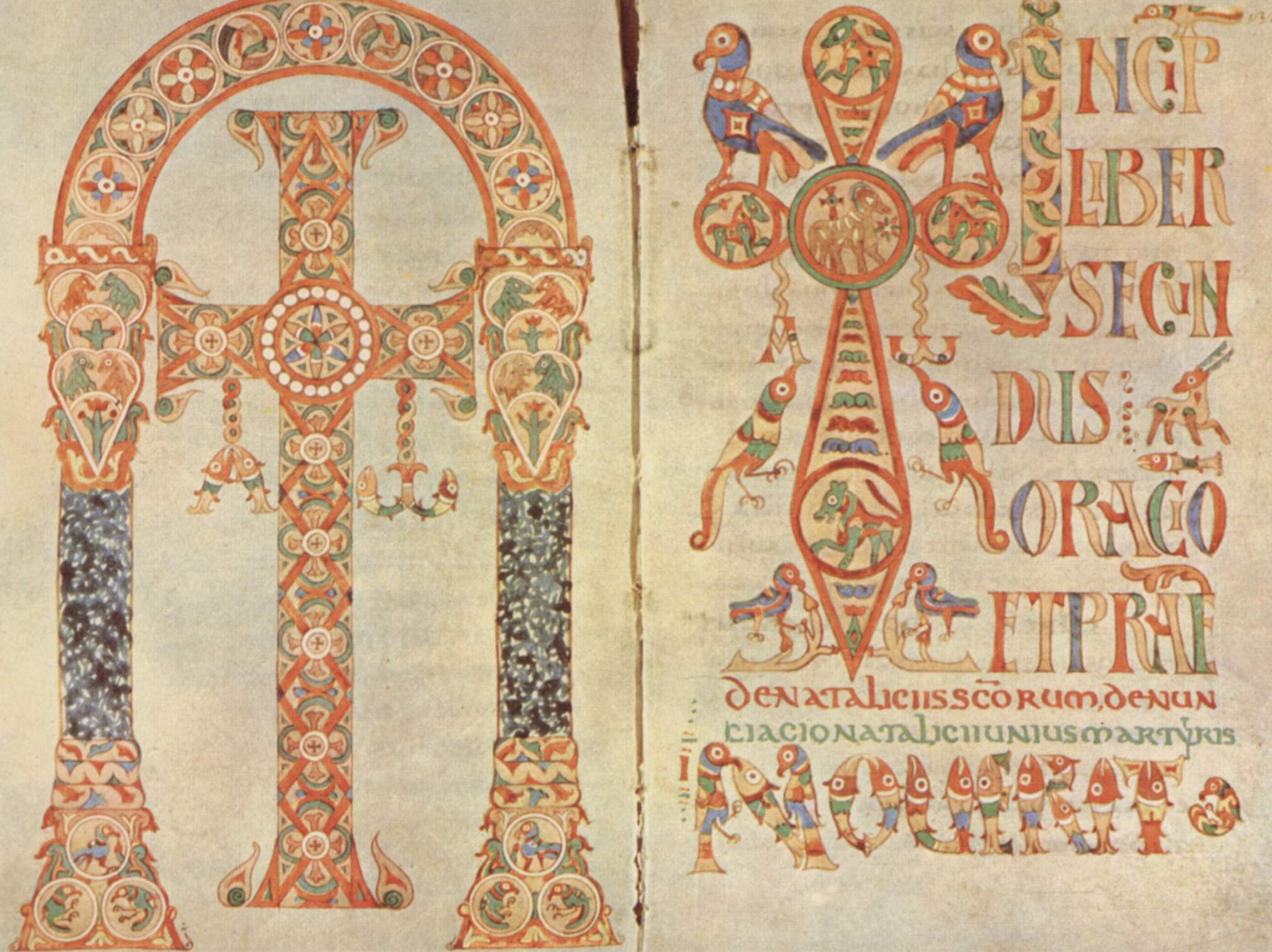|
Communion Antiphon
The Communion ( la, communio; grc-gre, κοινωνικόν, ''koinonikon'') is a refrain sung with psalm recitation during the distribution of the Eucharist in the Divine Liturgy or Mass. As chant it was connected with the ritual act of Christian communion. The koinonikon cycle of the Divine Liturgy in Orthodox rites According to Dimitri Conomos the koinonikon (κοινωνικόν), as it is sung as an elaborated communion chant during the Divine Liturgy, has derived from an early practice of psalm recitation similar to Western liturgies, when the ''Koinonikon'' served as a troparion. The oldest troparion which was used for communion, was "Γεύσασθε καὶ ἴδετε" ("O taste and see that the Lord is good", Ps. 33:9). It was supposed to symbolize the last supper celebrated on Maundy Thursday. During the 5th century, when the Divine Liturgy of the Presanctified Gifts had established and this communion chant became associated with it, the custom spread over the Lenten ... [...More Info...] [...Related Items...] OR: [Wikipedia] [Google] [Baidu] |
Eucharist
The Eucharist (; from Greek , , ), also known as Holy Communion and the Lord's Supper, is a Christian rite that is considered a sacrament in most churches, and as an ordinance in others. According to the New Testament, the rite was instituted by Jesus Christ during the Last Supper; giving his disciples bread and wine during a Passover meal, he commanded them to "do this in memory of me" while referring to the bread as "my body" and the cup of wine as "the blood of my covenant, which is poured out for many". The elements of the Eucharist, sacramental bread ( leavened or unleavened) and wine (or non-alcoholic grape juice), are consecrated on an altar or a communion table and consumed thereafter, usually on Sundays. Communicants, those who consume the elements, may speak of "receiving the Eucharist" as well as "celebrating the Eucharist". Christians generally recognize a special presence of Christ in this rite, though they differ about exactly how, where, and when Chri ... [...More Info...] [...Related Items...] OR: [Wikipedia] [Google] [Baidu] |
Old Roman Chant
Old Roman chant is the liturgical plainchant repertory of the Roman rite of the early Christian Church. It was formerly performed in Rome, and, although it is closely related to Gregorian chant, the two are distinct. Gregorian Chant gradually supplanted Old Roman Chant between the 11th century and the 13th century AD. Unlike other chant traditions (such as Ambrosian chant, Mozarabic chant, and Gallican chant), Old Roman chant and Gregorian chant share essentially the same liturgy and the same texts. Many of their melodies are also closely related. Although primarily associated with the churches of Rome, the Old Roman chant was also performed in parts of central Italy, and it was possibly performed much more widely. History The chant that is now called "Old Roman" comes primarily from a small number of sources, including three graduals and two antiphoners from between 1071 and 1250. Although these are newer than many notated sources from other chant traditions, this chant is called ... [...More Info...] [...Related Items...] OR: [Wikipedia] [Google] [Baidu] |
Sacramental Bread
Sacramental bread, also called Communion bread, Eucharistic bread, the Lamb or simply the host ( la, hostia, lit=sacrificial victim), is the bread used in the Christian ritual of the Eucharist. Along with sacramental wine, it is one of two elements of the Eucharist. The bread may be either leavened or unleavened, depending on tradition. Catholic theology generally teaches that at the Words of Institution the bread's substance is changed into the Body of Christ (transubstantiation), whereas Eastern Christian theology generally views the epiclesis as the point at which the change occurs. Bread was also used in Jewish Temple ritual as well as in the religious rituals of Mandaeism, Mithraism, and other pagan cultures like that of ancient Egypt. Christianity Etymology of ''host'' The word ''host'' is derived from the Latin , which means 'sacrificial victim'. The term can be used to describe the bread both before and after consecration, although it is more correct to use i ... [...More Info...] [...Related Items...] OR: [Wikipedia] [Google] [Baidu] |
Fraction (religion)
The Fraction or () is the ceremonial act of breaking the consecrated sacramental bread before distribution to communicants during the Eucharistic rite in some Christian denominations. One of four actions It is almost universally recognized that the rite of breaking the bread is one of the four actions that make up Christian Eucharistic liturgies: # taking bread and wine (the offertory) # giving thanks to God over the bread and wine (the consecration) # breaking the bread (the fraction) # distributing the bread and wine (the communion) Western Christian Roman Rite In the Roman Rite of the Catholic Church, it is accompanied by the singing or recitation of the ''Agnus Dei''. The ''Agnus Dei'' is "the liturgical chant which from ancient times has been sung at Mass at the time of the ''fractio panis'', or the Breaking of the Bread, which precedes the Communion Rite of both the priest and the people". The Catholic Church recommends that the bread for use in the celebration "be made ... [...More Info...] [...Related Items...] OR: [Wikipedia] [Google] [Baidu] |
Gallican Chant
Gallican chant refers to the liturgical plainchant repertory of the Gallican rite of the Roman Catholic Church in Gaul, prior to the introduction and development of elements of the Roman rite from which Gregorian chant evolved. Although the music was largely lost, traces are believed to remain in the Gregorian corpus. History Several sources attest the existence of a distinctive Gallican rite in the Frankish lands between the 5th and 9th centuries. The Celtic Rite and Mozarabic rite, which are liturgically related to the Gallican, are sometimes collectively referred to as "Gallican" as opposed to the different structure of the Roman rite. Lack of a central authority led to the development of local traditions of the Gallican rite in Francia, sharing a basic structure but varying in details. These traditions endured until the Carolingian dynasty. During a papal visit in 752-3, Pope Stephen II had Mass celebrated using Roman chant. According to Charlemagne, his father Pepin a ... [...More Info...] [...Related Items...] OR: [Wikipedia] [Google] [Baidu] |
Isidore Of Seville
Isidore of Seville ( la, Isidorus Hispalensis; c. 560 – 4 April 636) was a Spanish scholar, theologian, and archbishop of Seville. He is widely regarded, in the words of 19th-century historian Montalembert, as "the last scholar of the ancient world". At a time of disintegration of classical culture, aristocratic violence and widespread illiteracy, Isidore was involved in the conversion of the Arian Visigothic kings to Catholicism, both assisting his brother Leander of Seville and continuing after his brother's death. He was influential in the inner circle of Sisebut, Visigothic king of Hispania. Like Leander, he played a prominent role in the Councils of Toledo and Seville. His fame after his death was based on his '' Etymologiae'', an etymological encyclopedia that assembled extracts of many books from classical antiquity that would have otherwise been lost. This work also helped standardize the use of the period (full stop), comma, and colon. Since the ea ... [...More Info...] [...Related Items...] OR: [Wikipedia] [Google] [Baidu] |
Pater Noster
The Lord's Prayer, also called the Our Father or Pater Noster, is a central Christian prayer which Jesus taught as the way to pray. Two versions of this prayer are recorded in the gospels: a longer form within the Sermon on the Mount in the Gospel of Matthew, and a shorter form in the Gospel of Luke when "one of his disciples said to him, 'Lord, teach us to pray, as John the Baptist, John taught his disciples. Regarding the presence of the two versions, some have suggested that both were original, the Matthean version spoken by Jesus early in his ministry in Galilee, and the Lucan version one year later, "very likely in Judea". The first three of the seven petitions in Matthew address God; the other four are related to human needs and concerns. Matthew's account alone includes the "Your will be done" and the "Rescue us from the evil one" (or "Deliver us from evil") petitions. Both original Greek language, Greek texts contain the adjective ''epiousios'', which does not appear in a ... [...More Info...] [...Related Items...] OR: [Wikipedia] [Google] [Baidu] |
Anaphora (liturgy)
The Anaphora is the most solemn part of the Divine Liturgy, or the Holy Sacrifice of the Mass, a thanksgiving prayer by virtue of which the offerings of bread and wine are believed to be consecrated as the body and blood of Christ. This is the usual name for this part of the Liturgy in Greek-speaking Eastern Christianity. In the Eastern Syriac tradition ''Qudaša'' is its equivalent. The corresponding part in western Christian liturgy is nowadays most often called the Eucharistic Prayer. The Roman Rite from the 4th century until after Vatican II had a single such prayer, called the Canon of the Mass. "Anaphora" is a Greek word () meaning a "carrying up" (as distinguished from the use of the same word, then meaning a "carrying back", in rhetoric and Anaphora (linguistics), linguistics), and so an "offering" (hence its use in reference to the offering of sacrifice to God). In the sacrificial language of the Greek version of the Old Testament known as the Septuagint, (prospherein) i ... [...More Info...] [...Related Items...] OR: [Wikipedia] [Google] [Baidu] |
Ambrose
Ambrose of Milan ( la, Aurelius Ambrosius; ), venerated as Saint Ambrose, ; lmo, Sant Ambroeus . was a theologian and statesman who served as Bishop of Milan from 374 to 397. He expressed himself prominently as a public figure, fiercely promoting the Christian faith against Arianism and paganism. He left a substantial collection of writings, of which the best known include the ethical commentary ''De officiis ministrorum'' (377–391), and the exegetical (386–390). His preachings, his actions and his literary works, in addition to his innovative musical hymnography, made him one of the most influential ecclesiastical figures of the 4th century. Ambrose was serving as the Roman governor of Aemilia- Liguria in Milan when he was unexpectedly made Bishop of Milan in 374 by popular acclamation. As bishop, he took a firm position against Arianism and attempted to mediate the conflict between the emperors Theodosius I and Magnus Maximus. Tradition credits Ambrose with develo ... [...More Info...] [...Related Items...] OR: [Wikipedia] [Google] [Baidu] |
Ambrosian Chant
Ambrosian chant (also known as Milanese chant) is the liturgical plainchant repertory of the Ambrosian rite of the Roman Catholic Church, related to but distinct from Gregorian chant. It is primarily associated with the Archdiocese of Milan, and named after St. Ambrose much as Gregorian chant is named after Gregory the Great. It is the only surviving plainchant tradition besides the Gregorian to maintain the official sanction of the Roman Catholic Church. History The history of Milan as a centre for religious music goes back to St. Ambrose, who is not known to have composed any of the Ambrosian chant repertory, much as Gregory the Great is not known to have composed any Gregorian chant. However, during his 4th-century tenure as bishop of Milan, he is credited with introducing hymnody from the Eastern Church to the West. Ambrose composed original hymns as well, four of which still survive, along with music that may not have changed too much from the original melodies. Two met ... [...More Info...] [...Related Items...] OR: [Wikipedia] [Google] [Baidu] |






